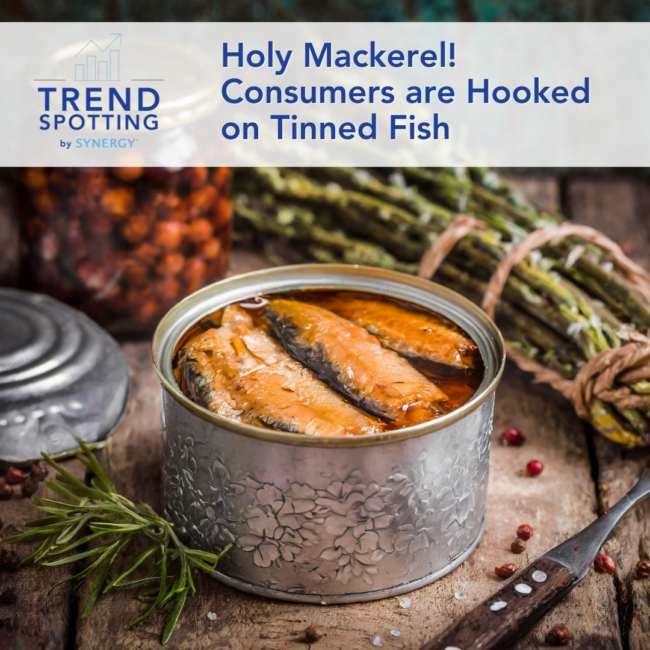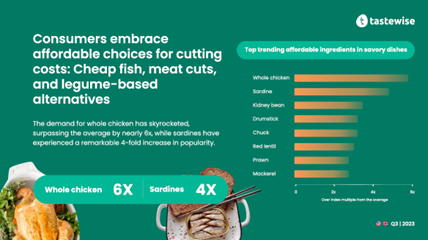Holy Mackerel! Consumers are Hooked on Tinned Fish

Consumers in the United States either love tinned fish or hate it. The common perception is that if it’s in a can, it’s inferior to fresh varieties. Overseas, especially in Portugal, France, Italy and Spain, canned fish or conservas is a common staple in the cuisine and considered a delicacy.
Attitudes about tinned fish in the US changed last year thanks to a TikTok user’s posts about her “tinned fish dates nights.” She made charcuterie boards that starred different canned fish and the posts went viral, making tinned fish the new it food.
As of late last year, videos on tinned fish generated more than 30 million views on TikTok and the US canned seafood industry sales grew from $2.3 billion in 2018 to more than $2.7 billion in 2023, according to Fortune. By 2027, the canned fish market size is forecast to reach more than $11 billion, according to IndustryARC.
As consumer perception shifts to favoring tinned fish, canned tuna, sardines, mackerel, anchovies, mussels, lobster and octopus are trending on plates in the US. According to Tastewise’s “The Price Crunch Effect: How Rising Costs Impact Consumer Choices in Savory Meals” report, sardines have experienced a remarkable four-fold increase in popularity as consumers embrace affordable choices like cheap fish.

Tinned fish is expected to continue trending in 2024 among consumers not only because of its affordability but also because it is sustainable, nutritious and offers a sense of adventure. The tinned fish craze is not only affordable, which according to Tastewise is prioritized by Millennials, but also sustainable which speaks to Gen Z’s values.
“The canning or tinning of fish has been demonstrated to significantly reduce waste in the fish value chain, Tasing the Future Founder and Director Mark Driscoll told the Global Seafood Alliance. He added that tinned fish producers are including information about how the fish are caught, by whom and the environmental impacts for the entire supply chain.
Canned fish is also trending because of its nutritional value. Fish varieties are high in protein with lots of Omega-3s and low in calories. According to this Consumer Report, a USDA study found slightly higher levels of two omega-3s in canned pink and red salmon than it found in fresh. A 3.5-ounce serving of canned salmon almost delivers as much calcium as a glass of skim milk if you eat the soft bones and if it’s wild-caught, it contains less mercury than farmed fish.
It is also a way to fulfill consumers’ desires for experiences and travel through food. For those looking to explore fish from around the world, the Tinned Fish Club, for example, is a $30 per month subscription box service for imported canned seafood with recipe ideas included. In New York City’s Times Square, the Fantastic World of the Portuguese Sardine recently opened selling premium and luxury tinned fish. The retailer is an established brand across Portugal and the Times Square space is its first international location.
Flavors that pair well with sardines include bacon, tempeh, Emmentaler cheese, macadamia nut, hazelnut and orange. Flavor pairings that complement salmon include butter, chipotle and cucumber. Contact us for more flavor pairings or to learn more about our savory capabilities.
insights

